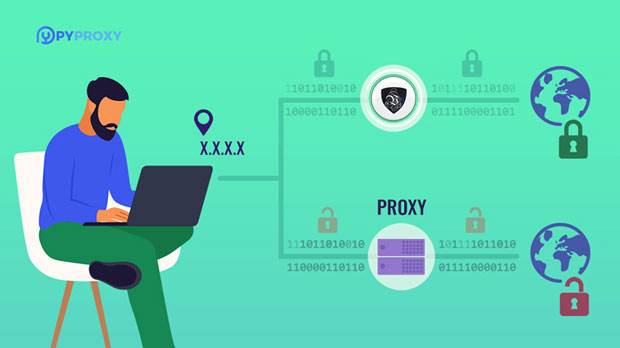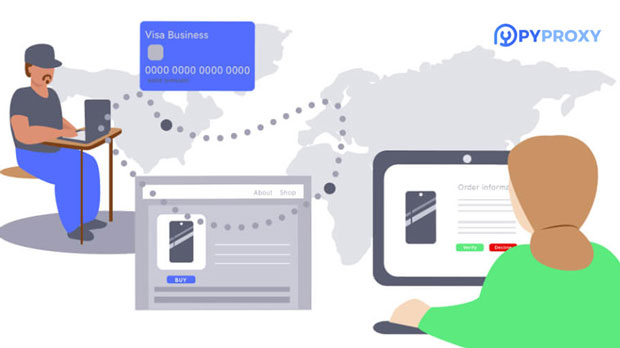When accessing Pirate Bay, the choice between using residential proxies and data center proxies can significantly impact both performance and anonymity. While both types of proxies serve to mask the user's IP address, they differ fundamentally in how they operate and the benefits they offer. Residential proxies are associated with real residential addresses, making them harder to detect and block. On the other hand, data center proxies are generated from servers in data centers, making them faster but more easily detectable by anti-proxy systems. Understanding these differences can help users make informed decisions based on their needs, whether it's for browsing anonymity or accessing the site without interruptions. What are Residential Proxies?Residential proxies are real IP addresses assigned to residential homes by internet service providers (ISPs). These proxies are typically used to route traffic through these residential addresses, making them look like ordinary users. The primary advantage of residential proxies is that they are less likely to be flagged by websites or services. Since they appear as legitimate residential IP addresses, websites are more inclined to treat the requests as normal browsing activity.The main strength of residential proxies is their high level of anonymity. Because they are less recognizable as proxies, they make it more difficult for websites to track, block, or flag them. This makes them a preferred choice for users looking for long-term, uninterrupted access to Pirate Bay, especially when trying to avoid detection or geographical restrictions.What are Data Center Proxies?Data center proxies, on the other hand, are IP addresses that are provided by data centers, rather than being tied to real residential addresses. These proxies are created from servers housed in data centers and are designed for high-speed internet traffic. Data center proxies are typically faster than residential proxies because they are optimized for handling a large number of requests quickly.While data center proxies are faster and more cost-effective, they are easier for websites to identify and block. Websites often have systems in place to detect these proxies, and once a large number of requests from data center IPs are detected, they may block those IPs altogether. This is a significant disadvantage for users trying to maintain consistent access to Pirate Bay.Key Differences Between Residential and Data Center Proxies for Pirate Bay AccessThe decision to use residential proxies or data center proxies when accessing Pirate Bay hinges on several factors. Here’s a breakdown of the key differences:1. Anonymity and DetectionOne of the primary distinctions between residential and data center proxies is the level of anonymity each provides. Residential proxies are much harder to detect because they use real residential IP addresses. Websites are more likely to trust traffic coming from these IPs because they are associated with legitimate users. As a result, they are less likely to be blocked or flagged.In contrast, data center proxies, despite their speed, are more easily detected by websites. Anti-proxy technologies are becoming more sophisticated, and they are capable of distinguishing between residential and data center IPs. This means that data center proxies are more prone to getting flagged or blocked when accessing sites like Pirate Bay.2. Speed and PerformanceData center proxies are typically faster than residential proxies due to their design for high-volume traffic. Since they originate from powerful data center servers, they can handle a large number of requests quickly, offering faster download speeds and more reliable connections. For users who prioritize speed, data center proxies may seem like the better option.However, the speed advantage of data center proxies comes at a cost to reliability. Because they are more likely to be blocked, users may experience interruptions or slowdowns when accessing Pirate Bay. Residential proxies, while slower, offer a more consistent and uninterrupted browsing experience, which may be more important for users who prioritize access over speed.3. Reliability and BlockingReliability is a significant factor in determining the most suitable proxy type for accessing Pirate Bay. Residential proxies tend to offer more reliability in the long term. Since they are harder to detect, users are less likely to experience blocks or throttling. In contrast, data center proxies, due to their higher risk of detection, may require frequent IP switching or rotation, leading to a less reliable browsing experience.For individuals or businesses that need to ensure continuous access to Pirate Bay, residential proxies are often the better choice, despite their slightly slower speeds.4. Cost ConsiderationsWhen comparing costs, data center proxies are generally much cheaper than residential proxies. Residential proxies require a more complex setup, as they rely on real residential addresses, which increases their operational costs. On the other hand, data center proxies are more scalable and can be offered at a lower price point.For budget-conscious users, data center proxies might seem like an appealing option. However, considering the potential for blocking and reduced reliability, users might find the higher cost of residential proxies worth it for the added stability and anonymity.5. Geographic Location and Access RestrictionsFor users trying to bypass geo-restrictions or regional content blocks on Pirate Bay, residential proxies are often a better choice. Since residential proxies use IP addresses associated with real locations, they can more effectively mimic traffic from specific regions. This makes them useful for accessing content that might be restricted in certain countries.Data center proxies, on the other hand, may be limited in terms of geographical locations, as they are typically based in large data centers that may only provide access from a few countries. While some services offer geo-location options, they may not be as effective or reliable as residential proxies in this regard.Conclusion: Which Proxy Type is Right for You?In conclusion, the choice between residential and data center proxies when accessing Pirate Bay depends on your needs. If you prioritize anonymity, reliability, and long-term access, residential proxies are the better choice. They are less likely to be detected and blocked, offering a smoother and uninterrupted browsing experience.If speed and cost are your primary concerns, data center proxies may be more appealing, but keep in mind the increased likelihood of detection and blocking. For users looking to minimize costs but willing to deal with the occasional interruption, data center proxies might offer a good balance.Ultimately, the right proxy for accessing Pirate Bay depends on your goals—whether it's secure, long-term access or fast, cost-effective browsing.
Jul 02, 2025



































































